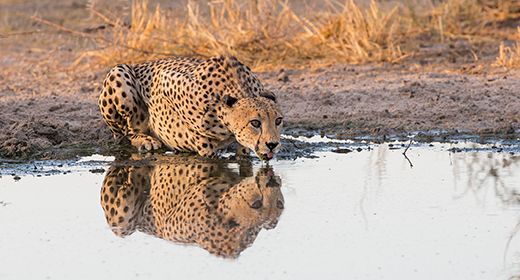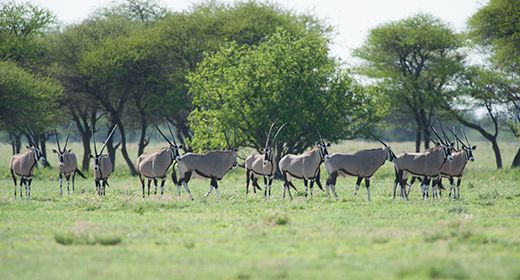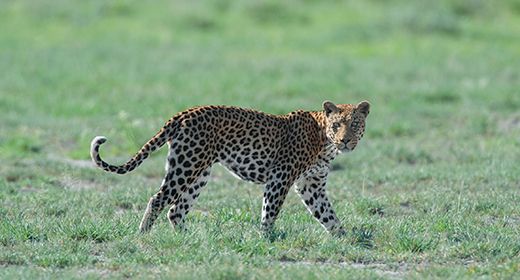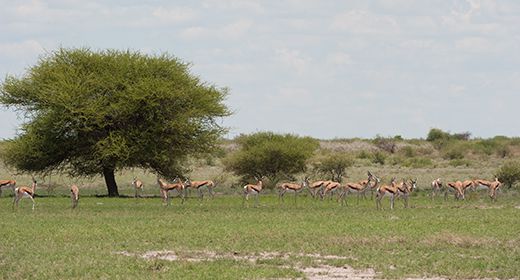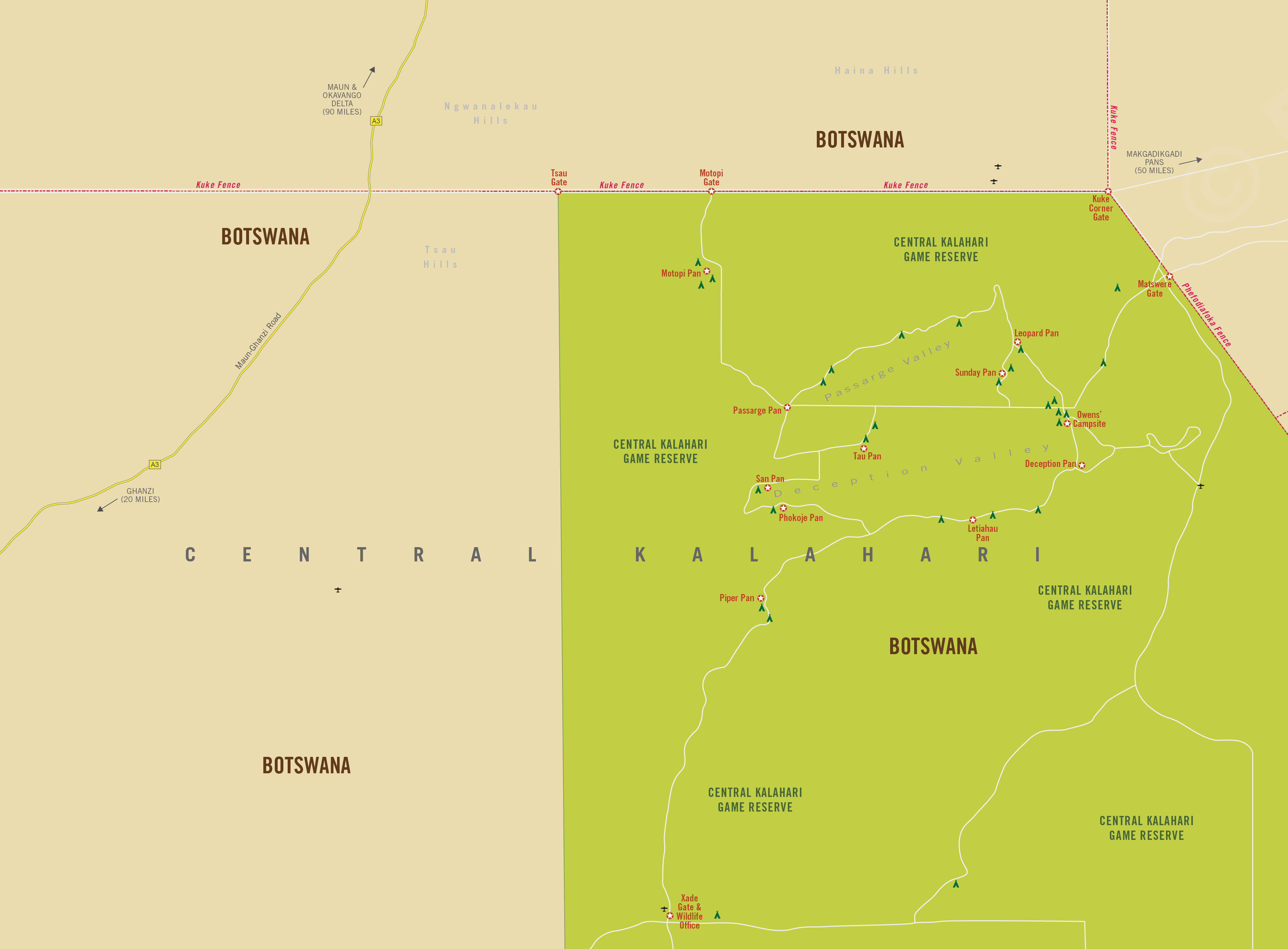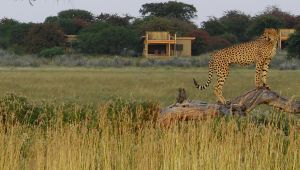Central Kalahari
(incl. Central Kalahari Game Reserve)
Region Links: Central Kalahari, Linyanti & Chobe, Makgadikgadi, Okavango Delta, Okavango Panhandle, Tuli Block
Highlights
- Go on safari in the Central Kalahari Game Reserve
- View desert adapted wildlife in one of Africa's great wilderness reserves
- Visit Deception Valley, the setting for the best-selling book Cry of the Kalahari
- Look for cheetah, lion, leopard and the big herds of springbok and oryx
EOA Recommends: Deception Valley Lodge, Kalahari Plains Camp, Tau Pan Camp
Botswana’s Central Kalahari (named for the Kalahari Desert) is a place of sand, open plains and fossilized river beds. The wild Central Kalahari Game Reserve offers visitors an extraordinary safari experience.
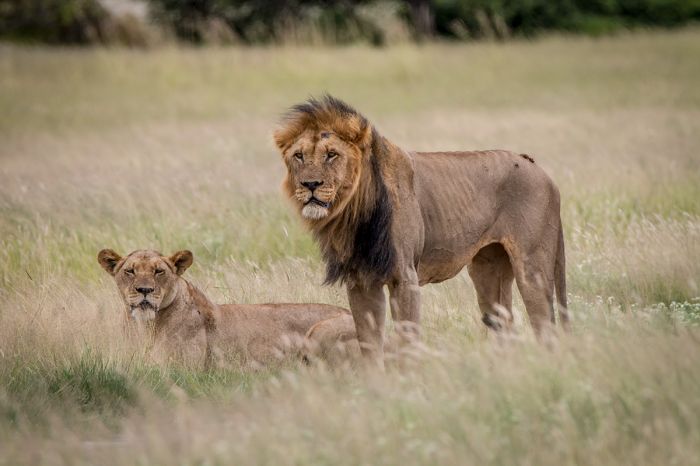
Lions in the Central Kalahari, Botswana
The focal point of the region is Central Kalahari Game Reserve (CKGR), which covers 20 400 square miles (52 800 sq kms), and is one of the largest game reserves in the world.
CKGR has only two permanent safari camps, but there are numerous well-positioned camping sites and overland safaris (which originate from Maun, Botswana) are extremely popular and offer seasonally superb game viewing in near solitude.
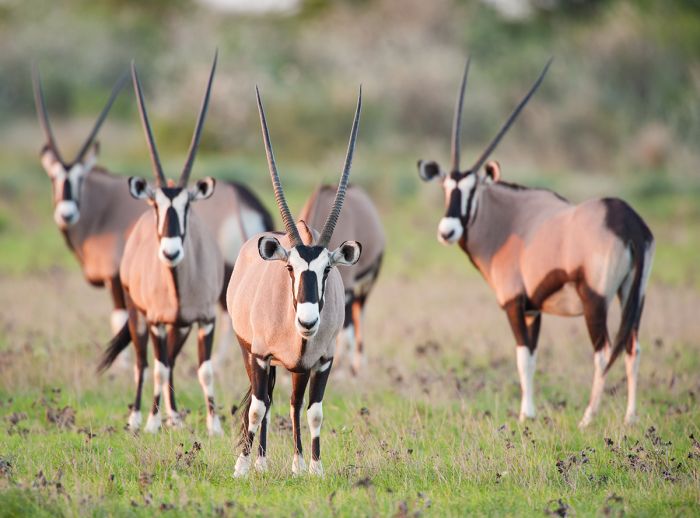
Gemsboks (oryx) in the Central Kalahari Game Reserve (Copyright © James Weis)
Wildlife in the CKGR is best during the green season, after the first rains, which usually occur in mid-December and continue thru March, but game viewing remains good for another two months after the rains have abated.
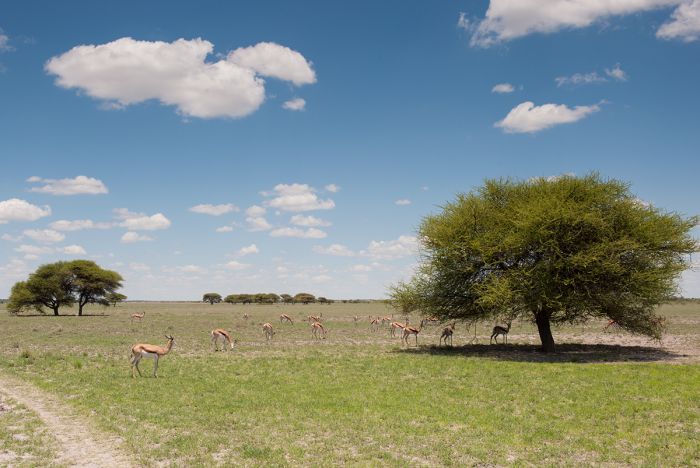
Springboks on the short grass plains in December (Copyright © James Weis)
Read More...
History
Declared as a nationally protected reserve in 1961, the Central Kalahari Game Reserve (CKGR) was closed to visitors for 30 years, effectively serving as a place where the native San people could carry on their ancient hunter-gatherer lifestyle in peace.
Mark and Delia Owens lived and conducted research on wildlife in the reserve for seven years during the 1970s. Their campsite was in Deception Valley and their best-selling book Cry of the Kalahari (highly recommended) is based on their experiences during that time.
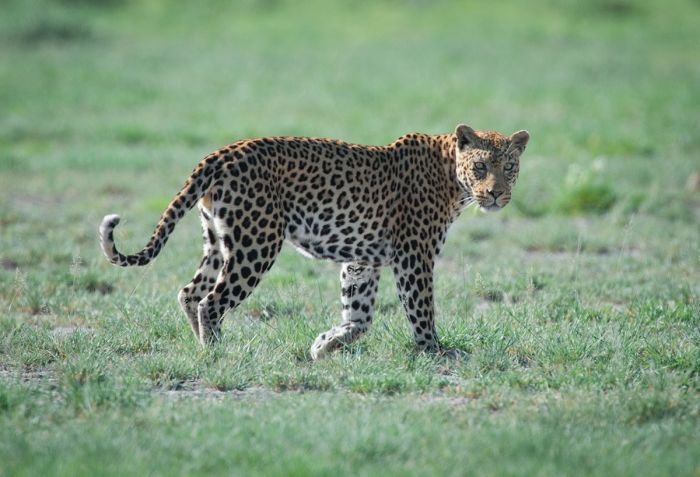
A leopard strolls across the Kalahari grass (Copyright © James Weis)
Geography
The large majority of the Central Kalahari is a massive, rolling sheet of sand that is part of the much larger Kalahari Desert. The Central Kalahari Game Reserve (CKGR) itself is much the same, but the northern portion of the reserve has the most variety of habitat and this is where the camps and overland safaris are located.
Deception Valley and Passarge Valley contain salt pans and fossilized rivers and most of the park's wildlife is concentrated here. The park authorities maintain two pumped waterholes, one at Letiahu and the other at Piper Pan, and a circuitous road network centers on this area.
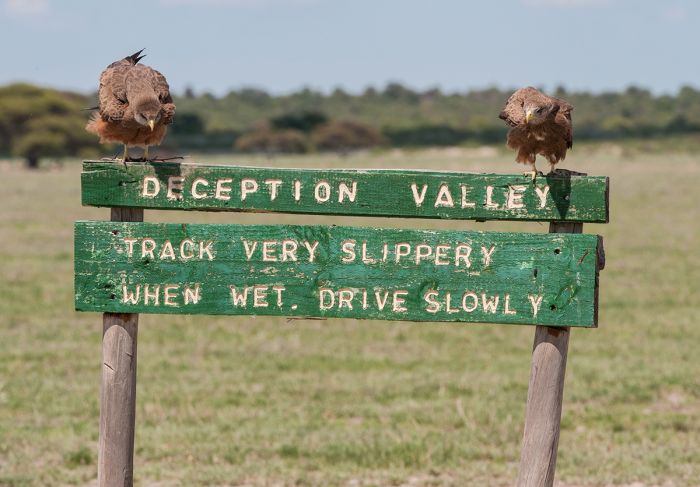
Yellow-billed Kites in the Central Kalahari Game Reserve (Copyright © James Weis)
Wildlife
Wildlife in the arid environment of the CKGR is not what it is in the Okavango, Chobe and Linyanti. The big game is here, but it is much more spread out and in lower densities than in the more water-rich regions to the north.
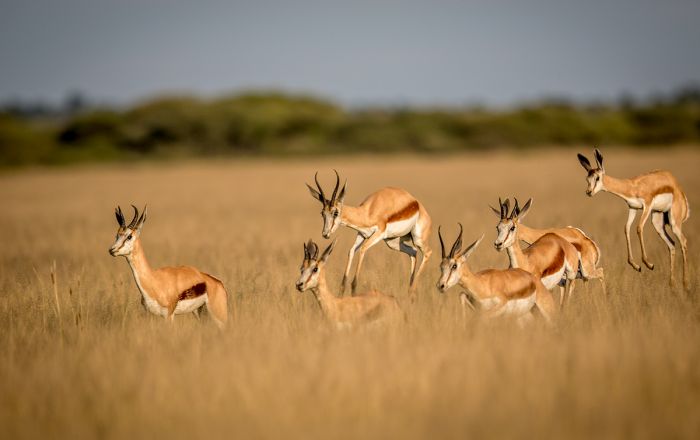
Springboks in Central Kalahari Game Reserve
Springbok are the most common large herbivore, dispersed in small groups throughout most of the year, but concentrating in big herds on the short grass plains in the north of the park during and just after the rains (January thru April).
Springboks are hardy and successful in this arid environment due to their ability to derive all the moisture they need by browsing and grazing on plants. They often eat during the night to maximize the moisture gained, as dew often forms on the bushes and grass they eat.
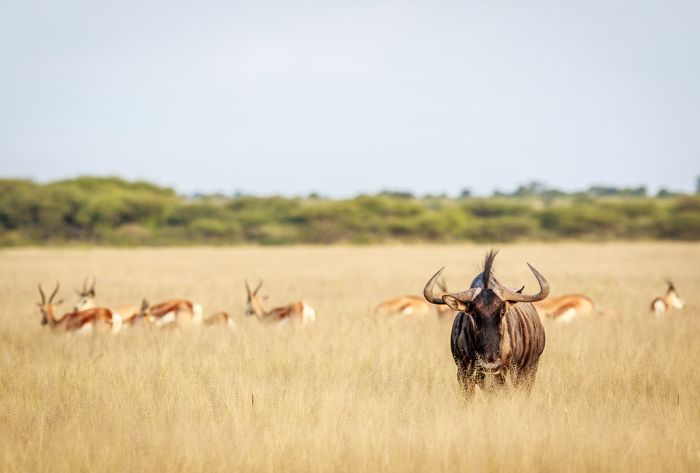
Wildebeest with springboks in the Central Kalahari
Blue wildebeests once numbered 250 000 in the region, but years of drought combined with the veterinary cordon fences have all but eliminated them from much of the Central Kalahari. Today there are still small herds of wildebeest in CKGR.
Oryx (also known as gemsbok) are also here, sometimes congregating in the hundreds to feed on the fresh grasses during and after the rains, but normally in small groups for most of the year. Like springbok, oryx are extremely well adapted to hot, desert conditions and they thrive in the Kalahari.
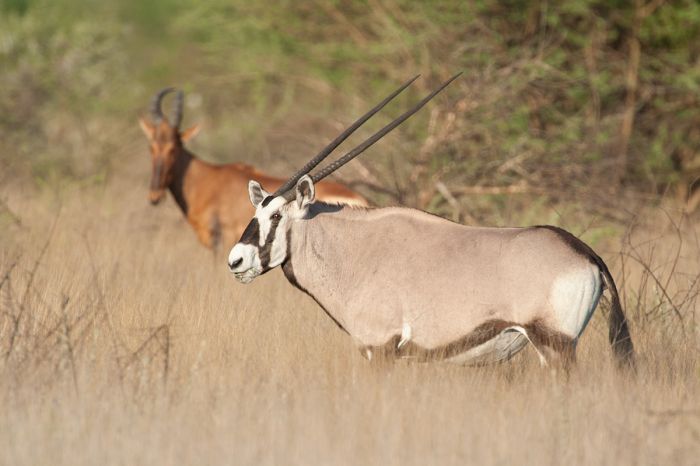
Oryx and red hartebeest in Central Kalahari (Copyright © James Weis)
Other herbivores commonly seen in the GKGR include red hartebeest, giraffe and eland. Greater kudu are here, although not in big numbers. Small antelopes include steenbok and common duiker.
Predators include lion, leopard, cheetah and spotted hyena, all of which are here in small numbers, as expected due to the low densities of their prey. The lower prey numbers also mean that the lions are more loosely associated and do not form large prides in this region. They are more commonly found in pairs or individually, ranging far in loose territories to hunt.
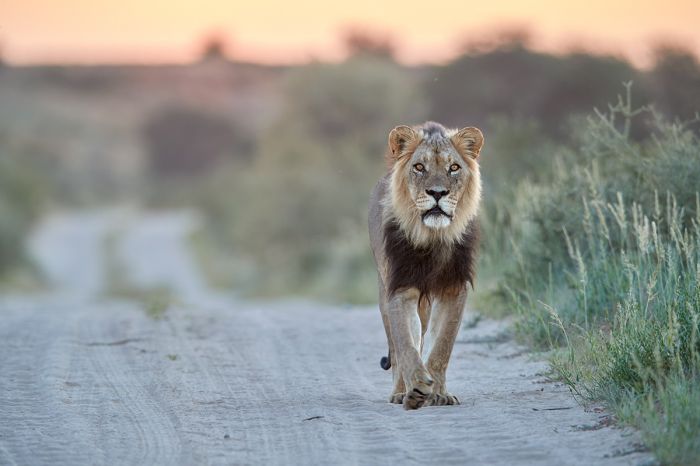
Lion in CKGR
Leopard here prey on mostly small animals, including spring hares, squirrels, and mice, as well as steenbok, springbok and the calves of the large antelopes.
Cheetah do quite well in the CKGR compared to more game-rich habitats which have higher densities of other large predators. Cheetahs often lose their kills to lions, leopard and spotted hyenas elsewhere, but because the predator densities are low here, it is one of the best places in Southern Africa to see cheetah.
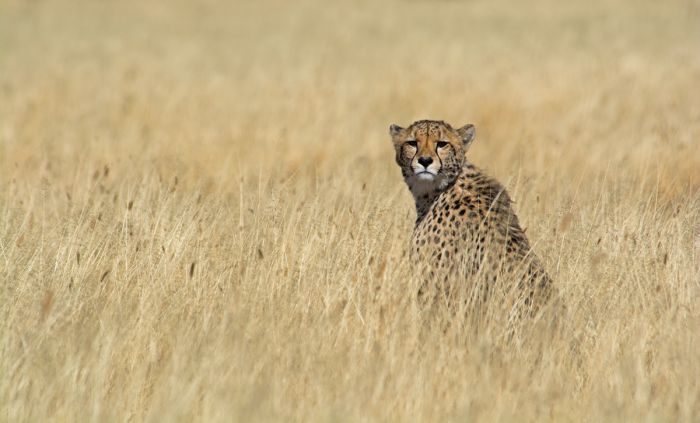
Cheetah in the CKGR
Other species seen in the central Kalahari include brown hyena, black-backed jackal, Cape fox, bat-eared fox, aardwolf, caracal, African wild cat, African wild dog, honey badger, genet, meerkat, and yellow mongoose.
Bird life in the region includes large numbers of ostrich, Kori Bustard, secretarybird, and northern black korhaan. Pale-chanting goshawks and yellow-billed kites are both common, plus a variety of other raptors, including bateleur, brown and black-breasted snake eagle, black-shouldered kite, rock kestrel, and martial and tawny eagle. Lanner falcons can be seen hunting doves and other small birds at the water holes.
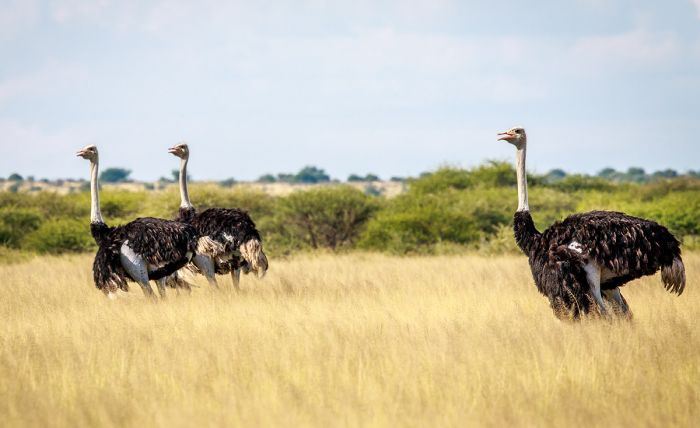
Ostriches in the Central Kalahari
Read More...
Great Good Fair Poor
- Jan
- Feb
- Mar
- Apr
- May
- Jun
- Jul
- Aug
- Sep
- Oct
- Nov
- Dec
Green season
Unlike most wildlife destinations, the Central Kalahari comes to life and offers its best game viewing during and just after the rains, from mid-December thru April.
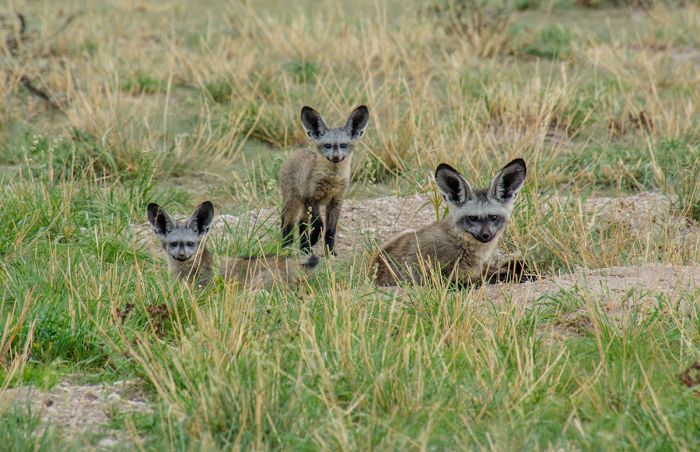
Bat-eared foxes in the green season
During the rainy months, the herds of grass eaters converge on the short grass plains around the pans in the north of the Central Kalahari Game Reserve. The landscape transforms into a verdant paradise and the sight of hundreds of springboks and gemsboks (oryx), together with strong numbers of ostrich and giraffe is spectacular. Also present are wildebeest, eland and red hartebeest.
The dramatic skies combined with the lush, green landscape and the herds spread out across the plains is something to behold in a place of such harsh existence for much of the year.
Once the rains abate, the herds tend to disperse quickly, but depending on the timing, excellent game viewing can continue well into May.
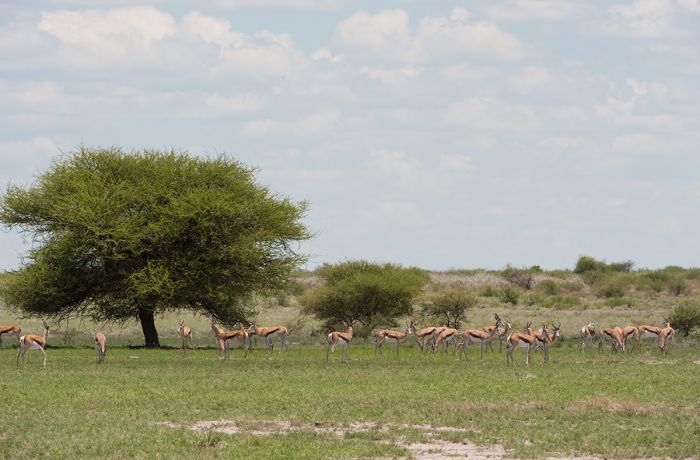
Springboks gather on the short grass plains in December (Copyright © James Weis)
During the rainy season, afternoon thunderstorms are the norm and it remains warm throughout the day, with comfortable temps in the early morning, but afternoon temps reaching 90°F (32°C) or more.
November and December are mostly sunny, with only occasional rain storms, which are a welcome relief after the long dry season. January and February are the wettest months with downpours most afternoons, but only of a few hours' duration. March experiences rain only every few days and temperatures are slightly cooler.
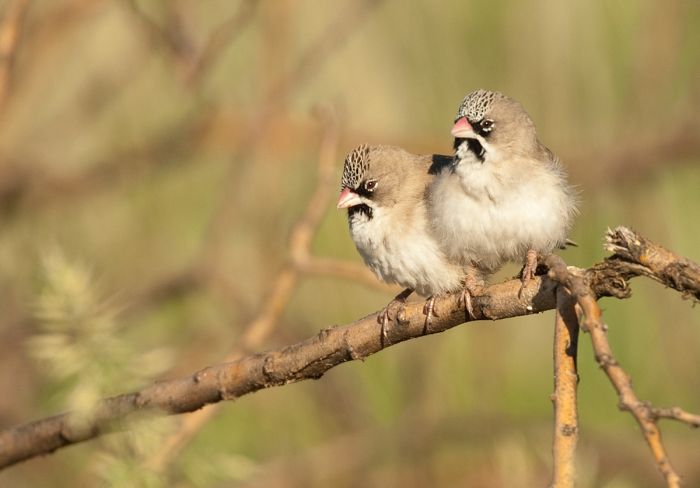
Scaly weavers in the Central Kalahari (Copyright © James Weis)
Dry Season
From June thru October, the Kalahari region is dry and the herds disperse widely to look for available food along the fossilized river beds; however, the various water holes in the main safari region in the north of CKGR are productive throughout the year. Two water holes, one at Letiahu and the other at Piper Pans, are kept full via bore hole pumps and these provide water for the wildlife.
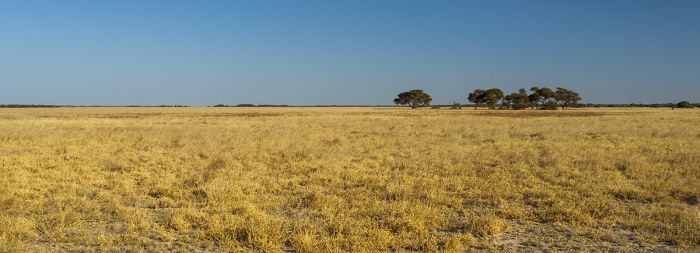
Typical dry season grassland view in the Central Kalahari Game Reserve
The rains are usually finished sometime in April and the region becomes progressively drier every week moving into May and June. June and July are the coolest months, after which Spring arrives and temps begin to rise again.
April and May are mostly dry with sunny days and midday temps very nice at around 82°F (28°C). June thru August experience little or no rain, with cooling temps around 75°F (24°C) on most afternoons. The early morning temps are chilly to cold at 43°F (6°C).
September and October mark the end of the dry season with October being extremely hot and reaching afternoon temps of 93°F (34°C), but with comfortable mornings and nights.
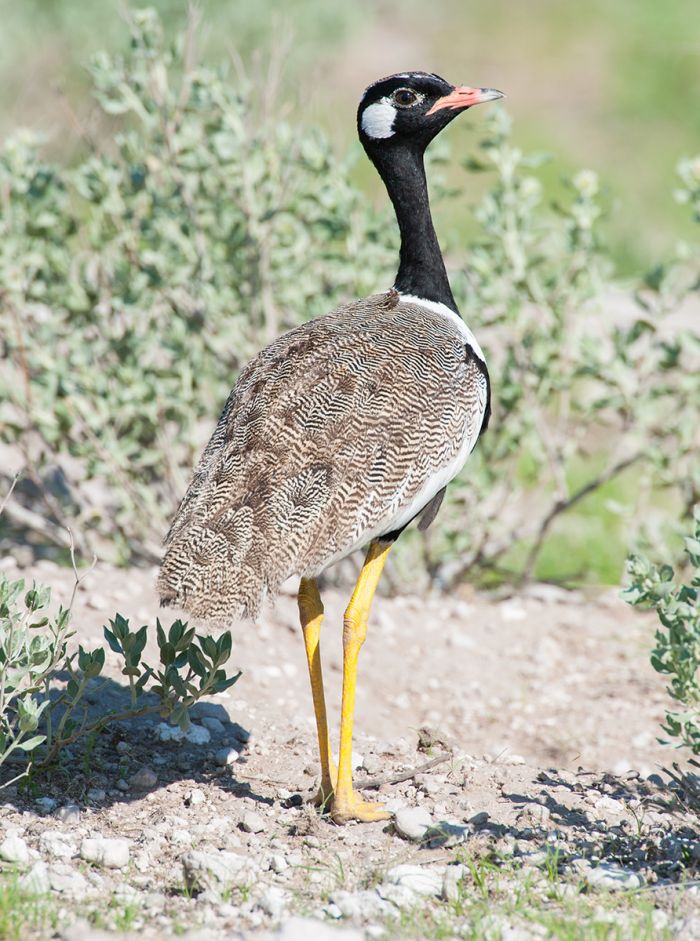
White-quilled bustard in Central Kalahari Game Reserve (Copyright © James Weis)




